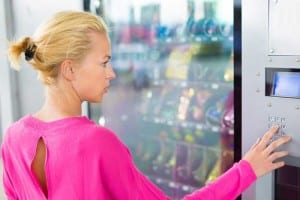MIAMI, FL – In the last decade, emergency departments have seen an astronomical increase in patient visits. Either it be a growing population, healthcare reform, or lack of consideration to those with true emergencies, non-emergent visits continue to plague ER waiting rooms across the nation. A local “medical” cannabis cultivator teamed up with several hospitals after he waited multiple hours for cold-like symptoms.

“I waited over 12 hours and didn’t even get an antibiotic prescription,” noted the irate drug dealer, I mean, cultivator. Instead of faking a seizure, he developed a machine giving patients the ability to take a prescription without ever having to see anyone, hence the Prescription Vending Machine (PVM) was born.
A team of five hospitals adopted the PVM and began making strides in waiting room times. Headed by renowned expert in acute decompensated fibromyalgia (ADF), Dr. Kyle Picard explains his methods. “The PVM is in its infancy, so we only were able to give patients 3 choices. After much debate we decided on the following: three-day work excuse, prednisone pack, and Z-Pak.
New data since its introduction is very promising. A 62% reduction in waiting time was noted within one week of deployment. In addition, the PVM is very user friendly. Patients simply place a fee into the machine, make a selection, and hit a single button, located at eye level, with their foreheads. Given the complexity of this new causality-and-chance technology, users are not guaranteed their choice prescription.
However, stronger forehead impacts directly correlate to a higher chance of receiving the prescription. Additionally, a safety net is in place behind users in the event that striking the selection button too hard causes loss of consciousness. The machine is able to detect this event and will quickly dispense the desired prescription, in addition to dispensing one ibuprofen 200 mg tab, and alert triage personnel to escort that patient back to their car or designated smoking area outside the emergency department. The transaction takes less than a minute to complete.
Highest PVM use were noted on the following timeframes:
– Fridays (8 pm to 2 pm)
– Sundays (12:30 pm to 4 pm, and 9 pm to 2 am)
– Mondays (4 am to 8 am)
– 24-hour period preceding major 3 day holidays
“These patterns bring insight as to what was crowding our departments previously,” statistician Brant Weatherford notes. Hospitals are starting to get competitive about PVMs as well, flashing PVM wait-times on billboards across major highways. Some centers have gone as far as placing ads in churches, nightclubs, and school lunches.
Critics of the PVM note it only shifts numbers around and does nothing to improve patient care. Others suggest it be moved 250 yards from hospitals, with arrows directing users from the waiting room doors to the PVM. Are we merely creating a mini-waiting room inside another waiting room or is this the new wave of the future?







